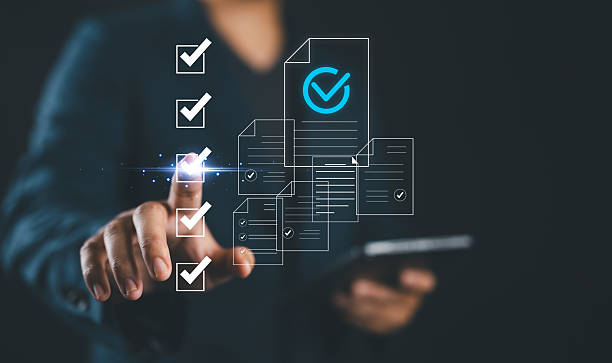What is On-Page SEO? Understanding the Fundamental Concept
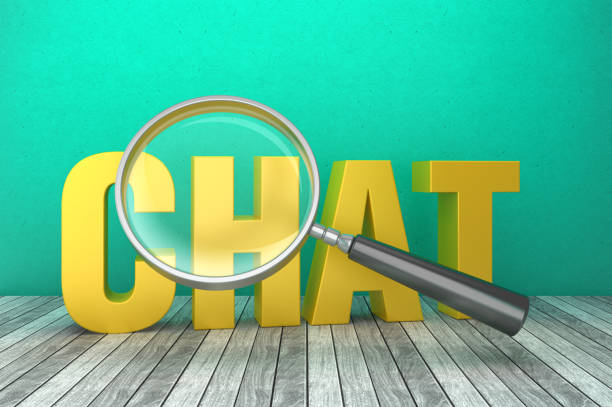
Have you ever wondered how some websites rank higher than others in search results? One of the most important answers to this question is the concept of internal SEO or On-Page SEO.
On-Page SEO refers to a set of actions performed within your website to improve its ranking in search engines and attract more organic traffic.
These actions include optimizing content, site structure, and HTML codes.
The main goal of On-Page SEO is to help search engines better understand the content of your pages, as well as improve user experience.
This part of optimization is considered the foundation of success in ranking your website, and without it, even the strongest off-page SEO strategies cannot be effective on their own.
In fact, On-Page SEO is the cornerstone of any successful search engine optimization strategy.
This domain not only helps search engines properly index and rank your content but also ensures users have a smooth and pleasant experience when visiting your site.
Key elements considered in this section include keyword optimization, content quality, URL structure, title tags and meta descriptions, internal linking, and page loading speed.
A deep understanding of these concepts and their proper application will lead to increased visibility of your site in SERP (Search Engine Results Pages) and ultimately attract more target audiences.
These explanations form the basis of our discussion on various aspects of On-Page SEO, aiming to provide you with an initial familiarity with this vital concept.
This explanatory approach helps you gain an overall picture of the importance of On-Page SEO and its place in a digital marketing strategy.
Are you worried your company’s old website is driving away new customers? Rasaweb solves this problem with modern and efficient corporate website design.
✅ Increases your brand credibility.
✅ Helps attract targeted customers.
⚡ Contact Rasaweb for a free consultation!
The Role of Keywords in On-Page SEO: Content’s Compass

One of the most important pillars of any On-Page SEO strategy is proper keyword research and usage.
Keywords are essentially the phrases that users employ to search for information, products, or services in search engines.
Finding appropriate and relevant keywords for your content signals to search engines exactly what your page is about and how it can answer user queries.
This is a vital educational step that every SEO specialist must know.
First, you should become familiar with keyword research tools.
Tools like Google Keyword Planner, Ahrefs, and Semrush help you find keywords with high search volume and suitable competition.
After identifying keywords, the more important step is how to use them in your content.
The main keyword should be used in the Title Tag, Meta Description, and H1 tag (main page title).
Also, natural and logical use of the main keyword and secondary keywords (LSI Keywords) in the body of the text helps improve your page’s ranking.
Don’t forget that overusing keywords (Keyword Stuffing) is not only unhelpful but can also harm your ranking.
The goal is for your content to be readable and valuable to the user while sending the necessary signals to search engines.
This part of On-Page SEO requires precision and subtlety so that both the search engine and the user are satisfied with your content.
Keyword optimization is the backbone of a powerful On-Page SEO strategy that paves the way for your content’s visibility.
Content Optimization for On-Page SEO and Table of Key Elements

Content optimization is the beating heart of On-Page SEO.
High-quality and optimized content not only convinces search engines to display your page in higher ranks but also provides an excellent user experience for visitors.
This is a comprehensive guide to creating powerful content.
The first and most important step is to produce original and valuable content that answers user questions and meets their needs.
Content length also matters; comprehensive and in-depth content usually performs better than short and superficial content.
In addition to quality, content structure is also vital in internal site optimization.
Using appropriate headings (H1, H2, H3, etc.) helps organize content and improve its readability.
Short paragraphs, bulleted lists, and relevant images can also add to the appeal and readability of content.
In this regard, the concept of E-A-T (Expertise, Authoritativeness, Trustworthiness), introduced by Google, is very important.
Your content should be produced by experts, use credible sources, and be trustworthy.
These specialized principles not only help your SEO but also increase your site’s credibility with users.
Below is a table of the main elements for content optimization in On-Page SEO:
| Optimization Element | Importance in On-Page SEO | Key Tips |
|---|---|---|
| Keywords | Search engine’s understanding of page topic | Accurate research, natural usage, distribution in important tags |
| Content Quality and Depth | Providing value to the user and increasing dwell time | Comprehensiveness, originality, answering user questions, E-A-T |
| Content Structure | Improving readability and user experience | Using headings, short paragraphs, lists, images |
| Internal Linking | Strengthening page connections and improving search engine crawling | Link to relevant and high-quality pages on the site |
| Image Optimization | Helping visibility in image search and site speed | Appropriate Alt Text, compression, correct format |
These elements form the basis of optimized content for On-Page SEO.
URL Structure and Its Importance in On-Page SEO
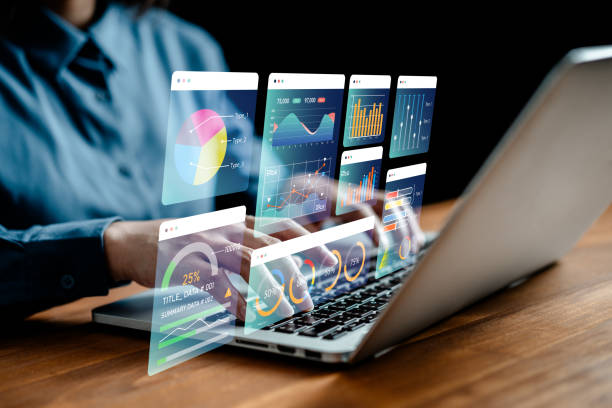
URL structure, or web address, is often overlooked but plays a vital role in your website’s On-Page SEO.
A good and optimized URL is more understandable for both search engines and users.
This is a specialized aspect of SEO that can help in a better understanding of the page’s topic.
The URL should be short, descriptive, and include the page’s main keyword.
For example, instead of a URL like “www.example.com/page?id=12345″, a URL like “www.example.com/blog/comprehensive-guide-to-on-page-seo” is much better.
This type of URL tells the search engine what the page is about and gives the user information about the content before clicking.
One reason for the importance of URL structure in on-page SEO is that the URL is often used as anchor text in external and internal links.
If your URL is clear and includes keywords, it helps with the page’s topical authority.
Also, using hyphens (-) instead of underscores (_) to separate words in the URL is recommended, as search engines recognize hyphens as word separators.
Avoiding complex and long parameters in the URL is also highly important, as it can make the crawling and indexing process difficult for search engine robots.
Optimizing URL structure is an important step in strengthening your On-Page SEO foundations that should not be overlooked.
This directly impacts the readability and comprehensibility of your content by algorithms.
Research shows that 80% of customers trust companies with professional websites more. Does your current website inspire this trust?
With Rasaweb’s corporate website design services, solve the problem of customer distrust and a weak online image forever!
✅ Create a professional image and increase customer trust
✅ Attract more sales leads and grow your business
⚡ Get a free consultation
Title Tags and Meta Descriptions; Your Entry Gates

Title Tags and Meta Descriptions are the first impressions users and search engines have of your page’s content.
These two elements, as entry gates, play a very important role in On-Page SEO and can determine the difference between your page being clicked or ignored in search results.
The title tag is the title displayed in the browser tab and also as the main link in search results.
This is a vital educational element.
To optimize the title tag, you must ensure it includes your main keyword and is appealing enough to encourage users to click.
The ideal length for a title tag is usually between 50 to 60 characters to be fully displayed in search results.
The meta description is also a short and attractive summary of your page’s content that appears below the title in search results.
Although meta descriptions do not directly impact rankings, they play a significant role in increasing the click-through rate (CTR).
A good meta description should include the keyword, an engaging summary, and a call to action, and its length is usually between 150 to 160 characters.
The more precisely and attractively these two elements are designed in On-Page SEO optimization, the greater your chances of attracting targeted traffic.
This task requires a creative vision and a deep understanding of user search behavior.
Image Optimization for On-Page SEO
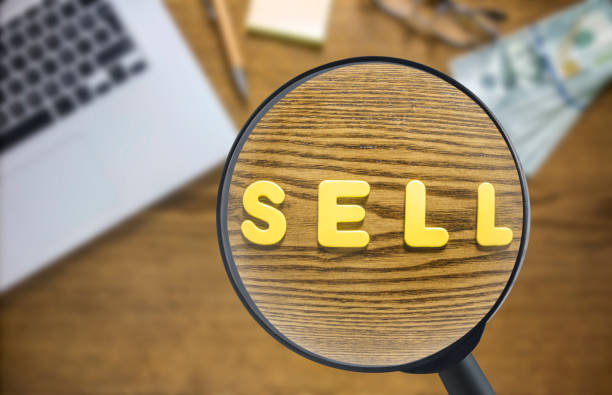
Images are an integral part of any engaging content, but did you know that their proper optimization can significantly impact your site’s On-Page SEO? Images help search engines better understand page content and appear in image search results.
This section is a practical guide to image optimization.
The first step is using appropriate Alt Text.
Alt Text, or alternative text, is a short description of the image content that is useful for both search engines and visually impaired users.
Alt Text should include relevant keywords and accurately describe the image.
In addition to Alt Text, image compression is also of great importance.
Large image files can significantly reduce page loading speed, which negatively impacts user experience and SEO rankings.
Use image compression tools like TinyPNG or ShortPixel to reduce image file sizes without a significant loss in quality.
Also, choosing the appropriate image format (such as JPEG for photos and PNG for graphics and icons) and using descriptive file names (instead of generic names like image001.jpg) also helps with On-Page SEO.
Implementing Lazy Loading for images, meaning images are only loaded when the user scrolls to the relevant section of the page, can also improve initial page loading speed.
By observing these tips, your images will not only contribute to the visual appeal of your site but also strengthen your On-Page SEO strategy.
Site Loading Speed and User Experience in On-Page SEO and Tool Comparison
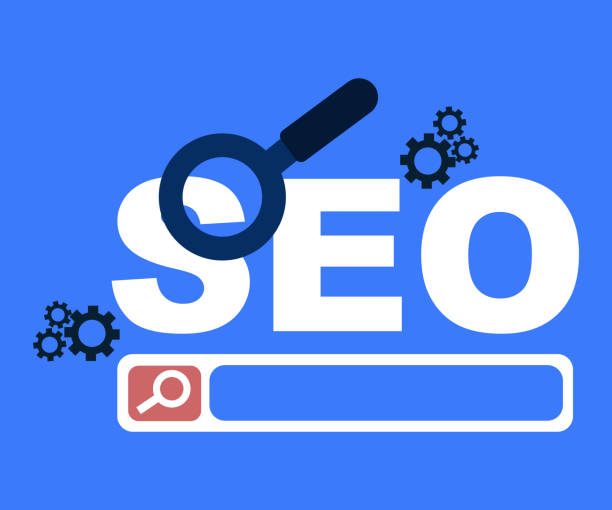
Site loading speed has been one of the most important ranking factors in Google’s algorithms, especially in recent years.
This factor not only affects your site’s ranking in search results but also directly impacts user experience (UX) and bounce rate.
This is an analytical and specialized section that highlights its importance.
Today’s users expect websites to load instantly, and any delay can lead to losing visitors.
By introducing Core Web Vitals, Google has emphasized the importance of page speed and visual stability more than ever.
Improving page loading speed is a critical part of the On-Page SEO strategy.
To evaluate and improve your site’s speed, various tools provide valuable information.
Google PageSpeed Insights is one of the most popular tools that provides performance scores for your site’s desktop and mobile versions and offers recommendations for speed improvement.
Another tool like GTmetrix also provides deeper analyses of factors affecting site speed (such as HTTP requests, CSS, and JS files).
Pingdom Tools also allows you to check your site’s loading speed from various locations worldwide.
Regular use of these tools for continuous monitoring and optimization of site speed is an integral part of on-page SEO.
Below is a table comparing these tools:
| Tool | Key Features | Focus | Target Audience |
|---|---|---|---|
| Google PageSpeed Insights | Lighthouse scores, field and lab data, improvement suggestions | Core Web Vitals and User Experience | Developers, SEO specialists |
| GTmetrix | Waterfall reports, PageSpeed and YSlow scores, loading videos | Technical details of page loading | Developers, Webmasters |
| Pingdom Tools | Speed tests from various locations, performance details | End-user perspective performance, global | SEO specialists, marketers, website owners |
Choosing the right tool depends on your needs and expertise level, but all are effective in improving your On-Page SEO.
Internal Linking: Your Site’s Roadmap

Internal linking is one of the most powerful yet often overlooked aspects of On-Page SEO.
This process means creating links from one page on your website to another page on the same website.
This helps search engines better understand your site’s structure, identify relationships between pages, and distribute authority (Link Equity) throughout the site.
From a user’s perspective, internal links help them easily navigate your site and discover more relevant content, which leads to increased dwell time and reduced bounce rate.
This is a key guide for site structuring.
To optimize internal linking, pay attention to a few important points.
First, use descriptive and keyword-rich anchor texts.
For example, instead of “Click here”, use a phrase like “Comprehensive On-Page SEO Guide”.
Second, link to pages that have high SEO importance or whose rankings you want to strengthen.
Third, your linking structure should be logical and hierarchical, so that main pages link to category pages and then to more detailed pages.
Creating Hub Pages or Pillar Content that link to several other related pages is an effective strategy in on-page SEO.
This type of linking helps strengthen your site’s topical authority.
A strong internal linking strategy acts like building a precise roadmap for search engines and users, helping them easily navigate your content world and, in doing so, significantly strengthens your On-Page SEO.
Did you know that your company’s website is the first point of contact for 75% of potential customers?
Your website is the face of your brand. With **Rasaweb**’s corporate website design services, create an online presence that earns customer trust.
✅ Create a professional and lasting brand image
✅ Attract target customers and increase online credibility
⚡ Get a free consultation from **Rasaweb** experts!
Common On-Page SEO Errors and Solutions
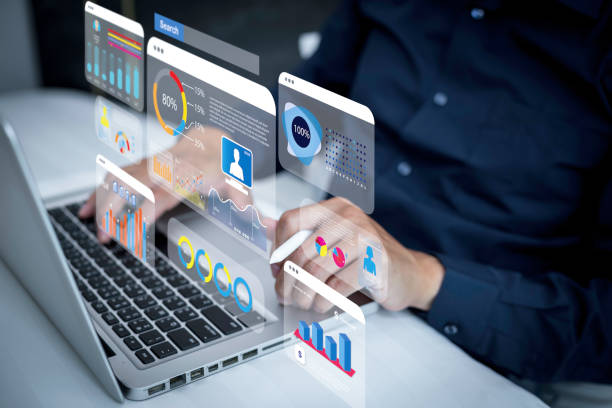
Even experienced SEO specialists sometimes make mistakes, especially in the field of On-Page SEO.
Identifying and fixing these errors is crucial for maintaining the health of your site’s SEO.
This section is designed as thought-provoking content to encourage you to think about and examine potential errors on your site, and then provide guidance for resolving them.
One of the most common problems is Duplicate Content.
This occurs when identical or very similar content exists across multiple URLs on your site or even on other sites.
Google gets confused about duplicate content and cannot determine which version to rank, which harms your ranking.
Solutions include using Canonical tags, 301 redirects, or rewriting the content.
Another error is the presence of Broken Links.
Broken links not only disrupt the user experience but also signal to search engines that your site is not well-maintained.
Tools like Google Search Console can help you identify these links.
Thin Content, or content that offers little value to the user, is also a serious problem in On-Page SEO.
Ensure that each page has comprehensive, unique, and valuable content.
Lack of Schema Markup is also a missed opportunity; these structured codes help search engines better understand your content and display it in a richer format in search results (such as rating stars or FAQs).
Ignoring these errors can render your On-Page SEO efforts ineffective, so regularly checking and fixing them is of high importance.
Monitoring and Continuous Improvement of On-Page SEO

SEO is not a static process; rather, it is a dynamic and continuous path that requires constant monitoring and improvement.
This is especially true for On-Page SEO, as search engine algorithms are constantly changing and user behavior evolves.
This is an analytical approach that emphasizes the importance of continuous monitoring.
Tools like Google Analytics and Google Search Console are two inseparable companions for any SEO specialist.
Google Analytics allows you to monitor site traffic, traffic sources, user behavior (such as bounce rate, dwell time), and conversions.
These data can provide valuable insights for improving content and user experience.
Google Search Console is a vital tool for On-Page SEO management that helps you monitor your site’s performance in search results.
You can check crawling errors, indexing issues, keywords your site ranks for, and even Core Web Vitals status.
Conducting regular content audits is also essential for identifying old, weak, or duplicate content and planning for their updates or removal.
Also, following SEO industry news and Google algorithm updates (news content) helps you align your On-Page SEO strategies with the latest changes.
This continuous approach to optimization ensures the preservation and improvement of your site’s ranking in the long term.
Success in On-Page SEO is not achieved by initial work alone but requires a commitment to continuous improvement.
Frequently Asked Questions
| Row | Question | Answer |
|---|---|---|
| 1 | What is On-Page SEO? | On-Page SEO refers to a set of actions performed within a website (on its pages) to improve its ranking in search engine results. This includes optimizing content, site structure, and HTML codes. |
| 2 | Why is On-Page SEO important? | On-Page SEO helps search engines better understand page content and determine whether that page is relevant and valuable for user searches. This better understanding leads to higher rankings. |
| 3 | What is the first and most important step in On-Page SEO? | Keyword Research is the most important initial step. By finding appropriate keywords, targeted and relevant content can be produced to meet user needs. |
| 4 | What is the role of the Title Tag in On-Page SEO? | The title tag is one of the most important ranking factors and should include the main keyword. This tag is displayed as the page title in search results and influences the click-through rate (CTR). |
| 5 | What is the importance of Meta Description? | Meta descriptions do not directly impact rankings, but by providing an attractive summary of the page’s content in search results, they can encourage users to click, thereby increasing the click-through rate (CTR). |
| 6 | Why is the use of headings (H1, H2, etc.) important in content? | Headings help structure content and improve readability for users and search engine crawlers. Using keywords in headings also helps search engines better understand the topic. |
| 7 | What does Image Optimization in On-Page SEO include? | It includes compressing images to reduce file size, using descriptive and relevant file names, and filling the Alt tag (alternative text) with relevant keywords to help search engines understand the image content. |
| 8 | What is Internal Linking in On-Page SEO? | Internal linking refers to creating links between different pages of a website. This helps in distributing page authority (Link Equity), improving user experience, and assisting search engine crawlers in discovering new pages. |
| 9 | Why is Page Speed important for On-Page SEO? | Page loading speed is a direct ranking factor and significantly impacts user experience. Slow pages can lead to an increased bounce rate and decreased user engagement. |
| 10 | What role does quality content play in On-Page SEO? | High-quality, comprehensive, unique, and valuable content for the user is the core of On-Page SEO. This content not only attracts and retains users but also sends positive signals to search engines and helps achieve better rankings. |
And other services of Rasaweb Advertising Agency in the field of advertising
Smart Digital Advertising: An effective tool to increase sales by optimizing key pages.
Smart Advertising Campaign: A new service to increase customer acquisition through marketing automation.
Smart Digital Branding: A specialized service for increasing customer acquisition based on the use of real data.
Smart Link Building: A new service for increasing campaign management through marketing automation.
Smart Conversion Rate Optimization: A quick and efficient solution for user engagement with a focus on attractive UI design.
And over hundreds of other services in the fields of internet advertising, advertising consultation, and organizational solutions
Internet Advertising | Advertising Strategy | Advertorial
Sources
Complete Guide to On-Page SEOAdvanced SEO TechniquesKeyword Research for SEOContent Optimization in SEO
? Rasaweb Afarin, by providing comprehensive digital marketing services, from multilingual website design and SEO to content marketing and social media, guides your business to new horizons of success. Contact us for consultation and to enhance your online presence.
📍 Tehran, Mirdamad Street, next to Bank Markazi, Southern Kazeroon Alley, Ramin Alley No. 6

